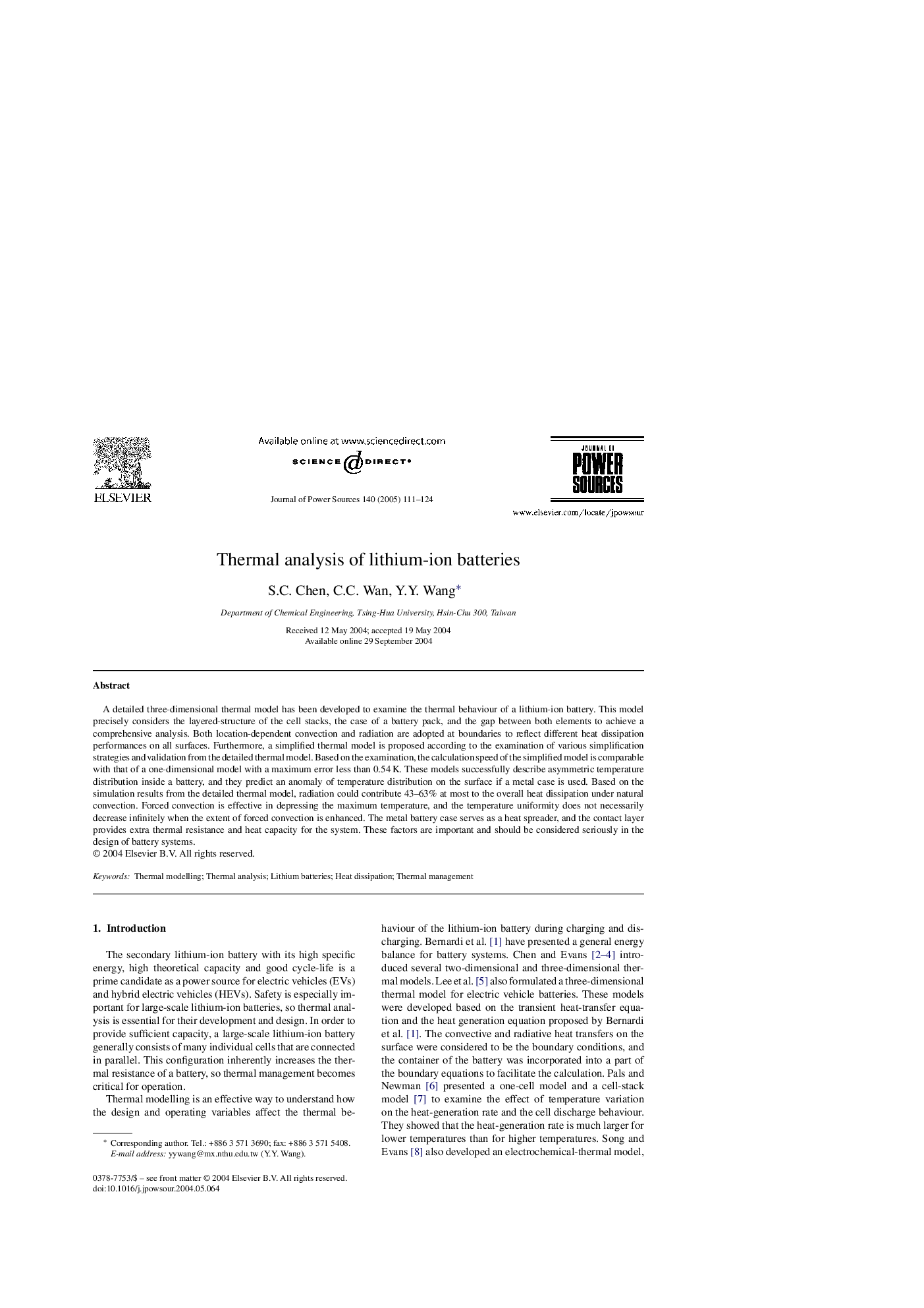| Article ID | Journal | Published Year | Pages | File Type |
|---|---|---|---|---|
| 10568447 | Journal of Power Sources | 2005 | 14 Pages |
Abstract
A detailed three-dimensional thermal model has been developed to examine the thermal behaviour of a lithium-ion battery. This model precisely considers the layered-structure of the cell stacks, the case of a battery pack, and the gap between both elements to achieve a comprehensive analysis. Both location-dependent convection and radiation are adopted at boundaries to reflect different heat dissipation performances on all surfaces. Furthermore, a simplified thermal model is proposed according to the examination of various simplification strategies and validation from the detailed thermal model. Based on the examination, the calculation speed of the simplified model is comparable with that of a one-dimensional model with a maximum error less than 0.54Â K. These models successfully describe asymmetric temperature distribution inside a battery, and they predict an anomaly of temperature distribution on the surface if a metal case is used. Based on the simulation results from the detailed thermal model, radiation could contribute 43-63% at most to the overall heat dissipation under natural convection. Forced convection is effective in depressing the maximum temperature, and the temperature uniformity does not necessarily decrease infinitely when the extent of forced convection is enhanced. The metal battery case serves as a heat spreader, and the contact layer provides extra thermal resistance and heat capacity for the system. These factors are important and should be considered seriously in the design of battery systems.
Related Topics
Physical Sciences and Engineering
Chemistry
Electrochemistry
Authors
S.C. Chen, C.C. Wan, Y.Y. Wang,
